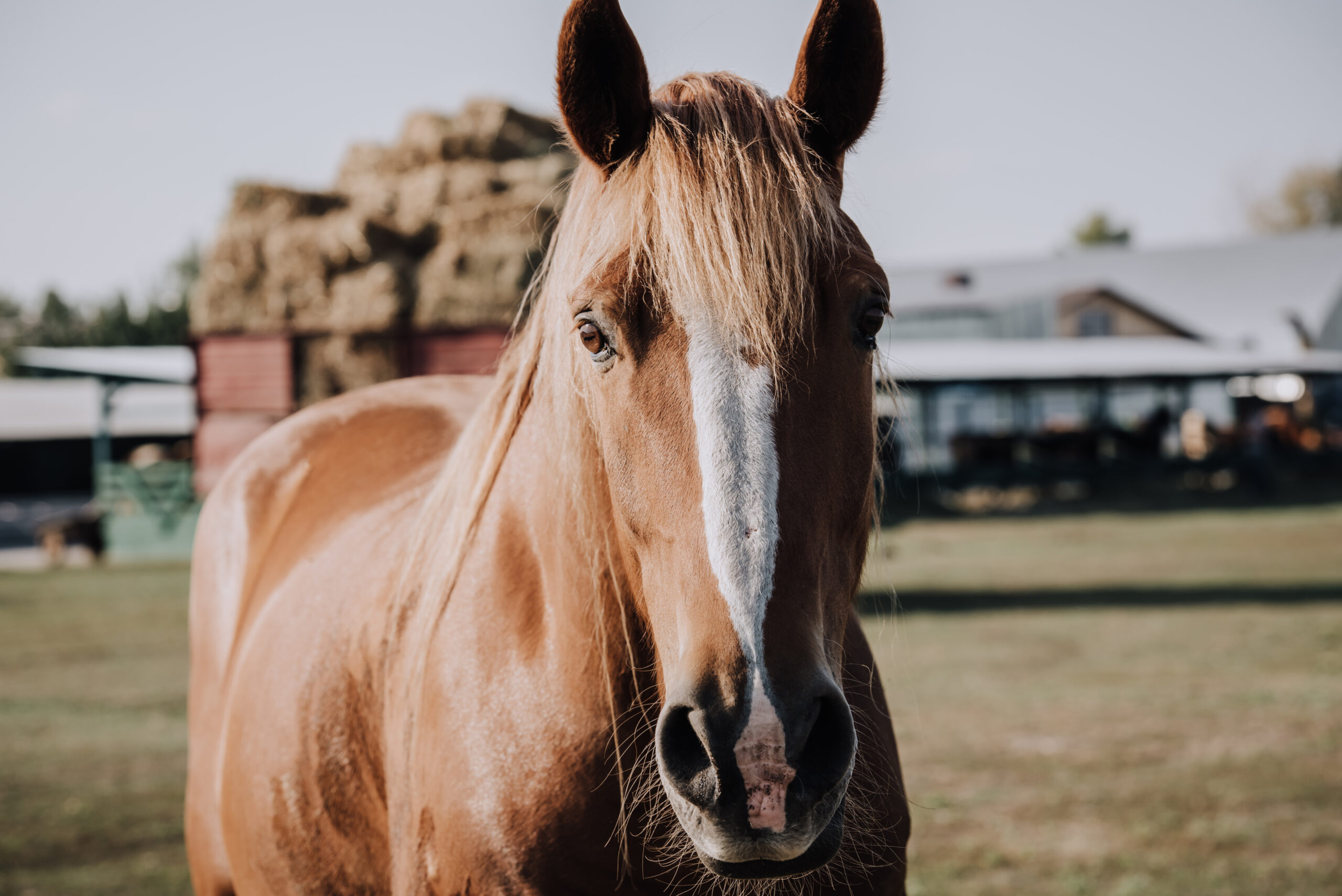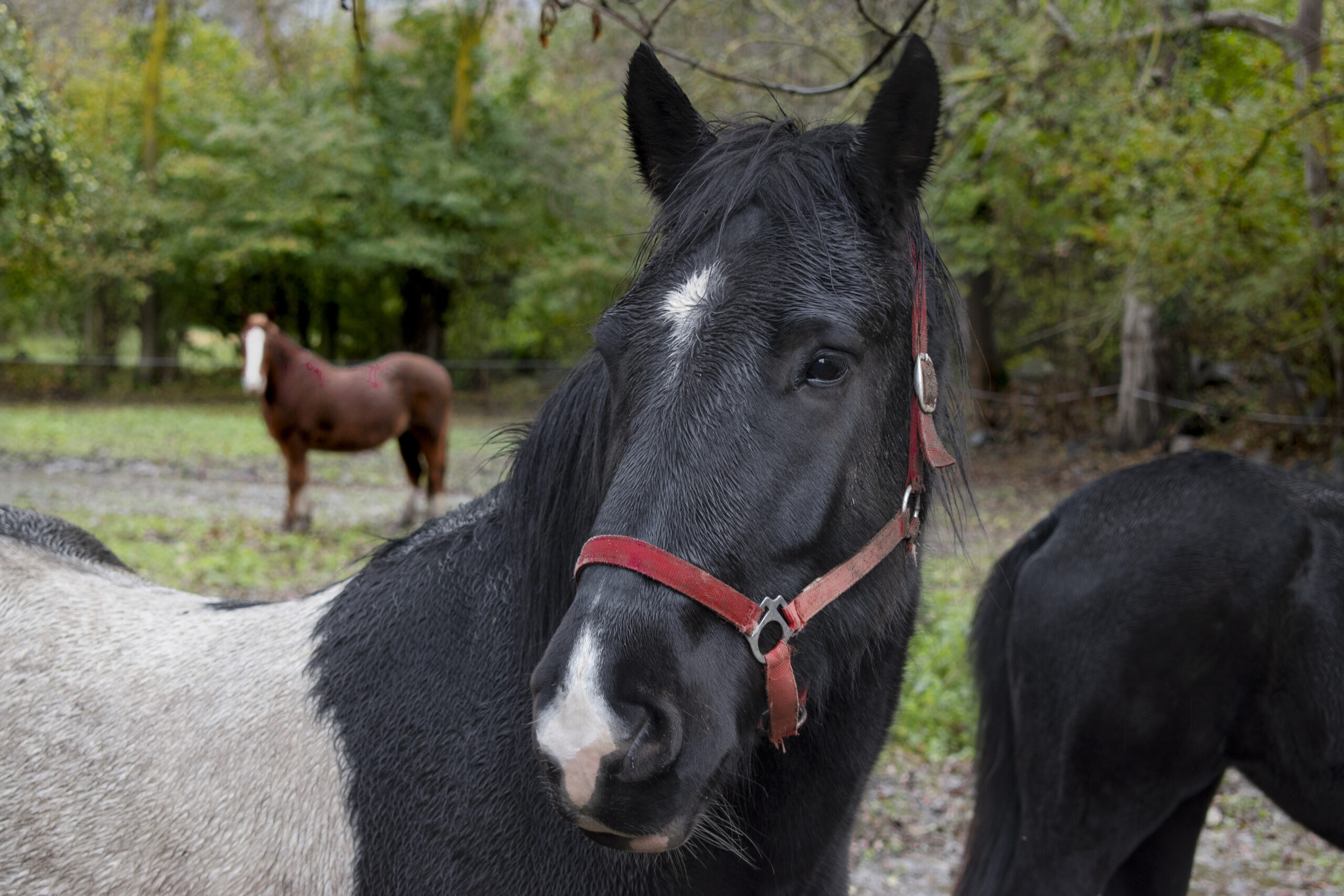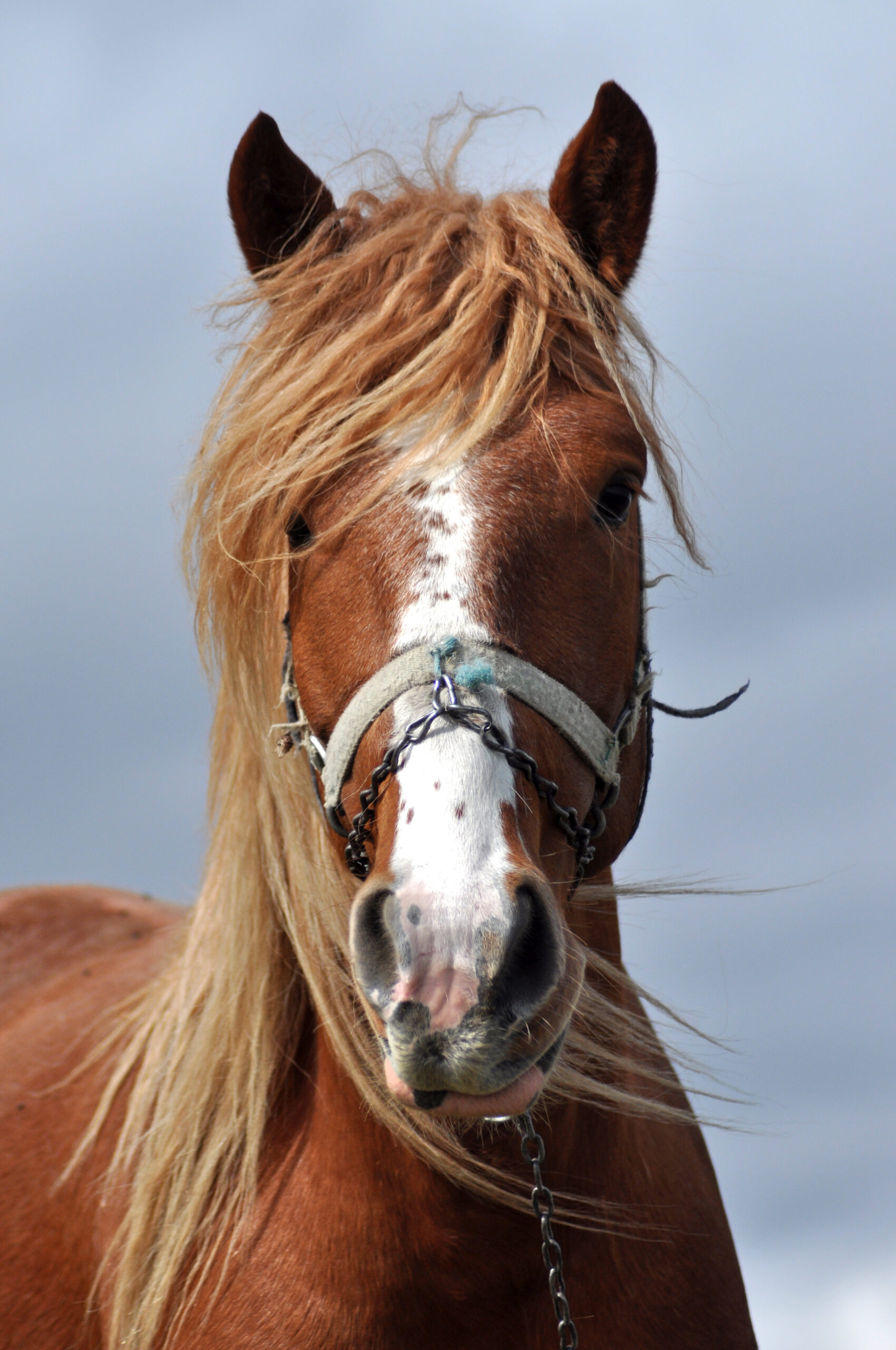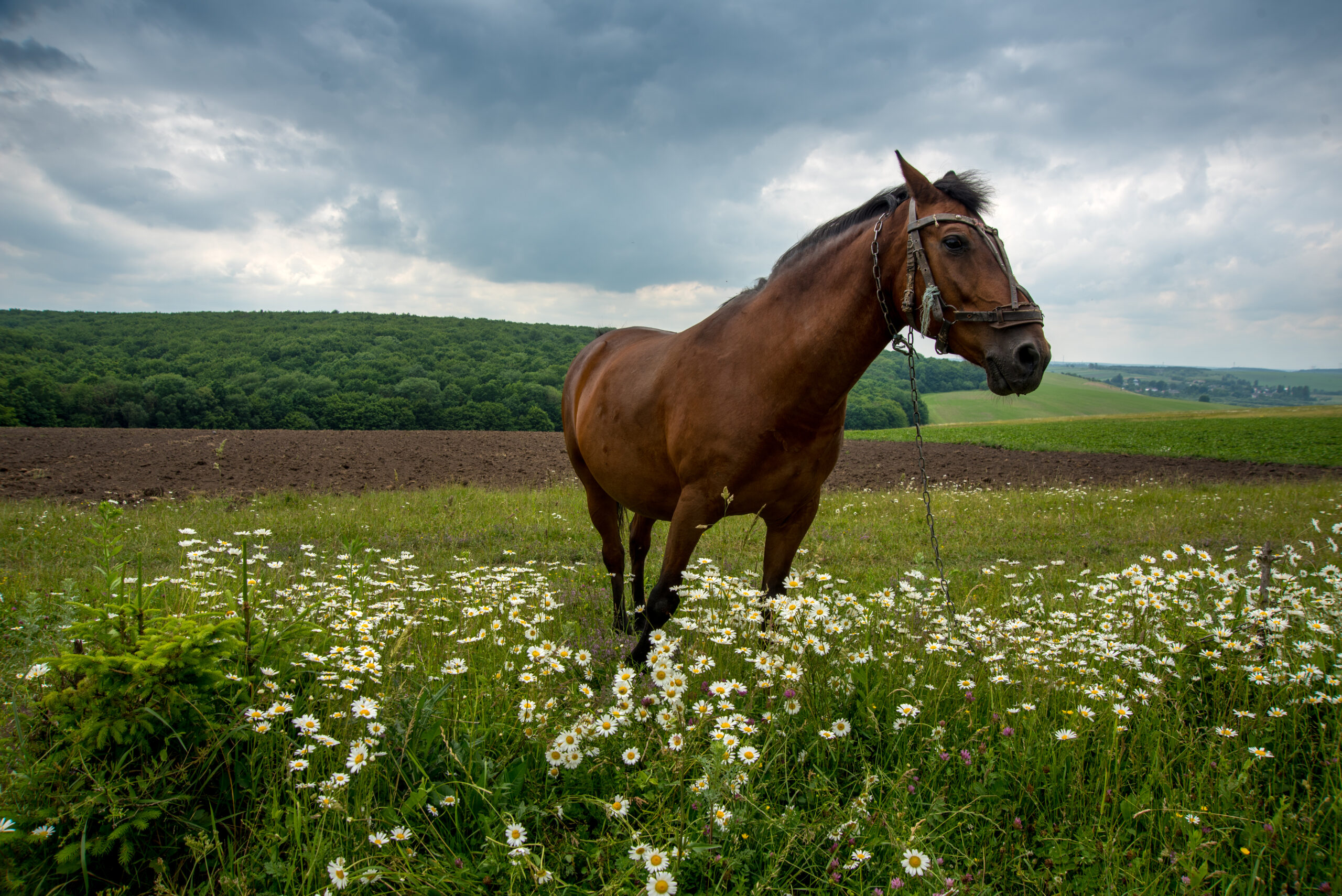Embrace the Change: Caring for Your Horse as Fall Approaches
As the crisp autumn air begins to sweep in, it’s time to rethink your horse’s care routine. Fall may seem enchanting, but it also brings a host of challenges that can affect your beloved equine companion. Though horses are naturally equipped to endure cooler temperatures, a little extra love and attention during this transition can be the difference between thriving and merely surviving as winter looms ahead.
With the dramatic fluctuations in fall temperatures—one moment warm and sunny, the next bitterly cold and rainy—your horse may be caught in a battle against discomfort if you’re unprepared. It’s not just about shelter; it’s about recognizing the myriad ways your horse’s needs change during this season. Altering their diet, grooming practices, and living conditions can significantly enhance their comfort and overall well-being as the seasons shift.

In this heartfelt guide, we will explore simple yet effective, natural approaches to refreshing your horse’s care routine for fall. From adjusting their feed to nurturing their coat and ensuring they have adequate shelter, these gentle strategies will prepare both you and your horse for the challenges of cooler weather without unnecessary stress.
Understanding the Natural Changes in Your Horse
Horses are incredible beings, resilient in the face of nature’s whims, but they still require our support. As days shorten and nights grow colder, your horse will naturally develop a thicker coat, an instinctual adaptation that provides essential insulation. While this coat is vital for warmth, it’s crucial to aid your horse in this process with mindful care.
However, it’s a misconception that a thicker coat alone is enough. As temperatures dip, your horse expends extra energy to maintain warmth. They may appear unfazed, but inside, they’re exerting effort just to stay comfortable. This heightened activity can alter their nutritional needs and water intake.
Moreover, the unpredictable mix of sunny days and cold nights, often accompanied by rain and wind, can leave your horse vulnerable to severe temperature changes. Proper shelter and feeding routines become essential to ensure your horse doesn’t sweat under a heavy coat during the warmer parts of the day, nor shiver as night falls.
By understanding the natural adaptations your horse goes through in fall, you can adjust your care practices to help them remain cozy and healthy during this transitional period. Remember, this is a journey you take together—one that requires empathy, awareness, and a commitment to natural, gentle care. Your horse deserves the best as they face the changing seasons, and with your help, they can navigate this time with grace and comfort.
A Compassionate Approach to Diet Adjustments
As the crisp chill of autumn descends upon us, it’s crucial to recognize the profound impact that diet has on your horse’s health and well-being. As temperatures drop, our magnificent equine companions naturally burn more calories, especially while growing their winter coats and expending energy just to keep warm. This is not just a minor adjustment—it’s a pivotal moment that can determine their comfort and happiness throughout the season.
Conventional veterinary practices often overlook the delicate balance required in a horse’s diet during these transitions, opting instead for pharmaceutical interventions or generic feeds that may not address their unique needs. But let’s take a more compassionate and natural route, one that embraces the power of whole foods and gentle care.
Increasing Forage Intake for Comfort and Warmth
Forage—like hay and grass—becomes even more vital as the days grow colder. Not only does it provide the essential nutrients your horse needs, but the digestion of forage generates warmth from the inside out, keeping them cozy in the face of autumn’s chill. As the vibrant green pastures begin to wither and lose their nutritional value, it’s imperative to increase your horse’s hay intake. This ensures they receive enough fiber and energy, bridging the nutritional gap left by dying grass.
The practice of offering free-choice hay is an incredible way to allow your horse to graze naturally throughout the day. This approach not only meets their increased caloric needs but also keeps their digestive systems healthy. If you’re concerned about weight gain, consider low-calorie hay options that won’t pack on the pounds but still provide necessary nourishment.
Achieving Nutritional Balance with Whole Foods
While hay is a cornerstone of your horse’s diet, ensuring a balanced intake of vitamins and minerals is equally essential. Fall is the perfect time to reevaluate their overall diet. This is where supplements come in—think natural mineral mixes that support your horse’s immune system and promote overall digestive health. Omega-3 fatty acids from flaxseed or fish oil can work wonders for maintaining a shiny coat and healthy skin as the air turns drier and cooler.
For horses that are actively working or are older and in need of extra nourishment, consider adding grain or concentrates, but do so with caution. Overloading on grains can lead to weight gain and digestive turmoil—a risk that conventional feeds often ignore.
Hydration: The Often-Overlooked Necessity
Even as temperatures cool, the need for hydration remains critical. Horses require ample water, especially when their diet leans heavily toward hay, which is significantly drier than fresh grass. Make sure their water source is clean and at a comfortable temperature. Horses are less likely to drink ice-cold water, which can lead to dangerous dehydration. Opt for lukewarm water or invest in heated buckets or tank heaters to ensure they have access to water that encourages drinking.
Adding a salt block to their pasture or stall is another simple yet effective way to stimulate thirst and encourage hydration. This is especially helpful during the cooler months when horses might instinctively drink less.
The Heart of the Matter
These straightforward dietary adjustments are not just about keeping your horse fed; they are about nurturing their overall health and comfort as the seasons change. By focusing on natural approaches and steering clear of the often harsh and invasive methods of conventional veterinary care, we can ensure our horses thrive. Let’s give them the compassion and care they deserve, allowing them to flourish during the enchanting fall season.
Essential Fall Grooming Tips: Nurturing Your Horse Naturally
As the days grow shorter and the chill of autumn settles in, your horse’s coat begins to transform, thickening into a beautiful winter mantle. This natural process, however, requires our attentive care. Conventional veterinary practices may emphasize pharmaceuticals or chemical grooming products that can do more harm than good, but we know there are gentler, more effective alternatives that can support your horse’s well-being. Let’s explore how to approach grooming this fall with empathy and respect for your horse’s natural needs.
Preparing for the Winter Coat: The Heart of Grooming
As your horse sheds its summer coat and begins to grow that cozy winter covering, regular grooming becomes vital. This isn’t just about aesthetics; it’s a fundamental aspect of their health. Brushing helps remove loose hair, dirt, and dead skin, allowing new hair to thrive. Every stroke of the brush is a chance to stimulate blood circulation, fostering a glossy and vibrant coat that reflects your horse’s overall vitality.
For this process, embrace tools like a curry comb to gently loosen dirt and hair, followed by a stiff brush to sweep everything away. Pay particular attention to sensitive areas like the belly and legs, where mud and moisture can accumulate, leading to irritation. Grooming is also a sacred opportunity to check for skin issues—dryness, irritation, or any signs of discomfort. Conventional veterinary care often overlooks these subtle cues, focusing instead on pharmaceuticals that may mask symptoms rather than address underlying causes.
Supporting Skin and Coat Health with Natural Solutions
As the air grows cooler and drier, your horse’s skin may start to feel the effects. This is where natural grooming products can truly shine. Instead of slathering on chemical-laden lotions that can do more harm than good, consider nurturing your horse’s skin with nature’s bounty. Coconut oil, for example, is a fantastic natural moisturizer. A small amount applied to their coat can lock in moisture and nourish their skin without the greasy residue that many commercial products leave behind.
For an added layer of protection, consider using a moisturizing shampoo or coat conditioner occasionally. This can help keep your horse’s skin healthy and coat shiny. However, be cautious about frequency; too many baths can strip the natural oils that serve as insulation against the cold. Over-washing can lead to dryness, irritation, and even increased susceptibility to illness—concerns that pharmaceutical solutions often fail to remedy.
The Danger of Conventional Approaches

It’s essential to recognize the potential dangers of relying on conventional veterinary practices. Many traditional treatments come with a laundry list of side effects, from skin irritations to long-term dependency on chemical products. Instead of addressing the root cause of a horse’s discomfort, these methods often mask symptoms, leading to a cycle of medication that can harm more than help.
By taking a holistic approach to grooming and care, you can protect your horse’s well-being in a gentle, natural way. Each grooming session is not just a routine; it’s an opportunity to bond, to nurture, and to advocate for their health. Let’s embrace the beauty of fall and ensure our beloved horses are cared for with compassion and understanding. In this season of change, let us support their natural resilience with love and gentle care, leaving behind the harshness of pharmaceuticals.
Nurturing Hoof Care During Wet Conditions: Protecting Your Horse Naturally
As the rain pours down and the ground turns to mush, we must face a heartbreaking truth: wet conditions can wreak havoc on our beloved horses’ hooves. Conventional veterinary care may rely on harsh treatments and pharmaceuticals, often leading to a cycle of dependency and side effects that can leave our horses worse off than before. It’s time to embrace a more compassionate approach—one that honors their natural resilience and nurtures their well-being through gentle, natural methods.
The Dangers of Wet Conditions
Rain and moisture can turn our horses’ hooves into vulnerable, soft targets for infections like thrush—a disgusting, painful condition that thrives in damp environments. Conventional remedies often mask the symptoms without addressing the root causes, leaving our horses to suffer unnecessarily. Instead of reaching for chemical-laden treatments, let’s prioritize natural alternatives that truly heal and protect.
The Power of Daily Care
In these challenging conditions, regular hoof cleaning and inspection are essential. Don’t let the mud and muck accumulate; pick your horse’s hooves daily to remove dirt, manure, and stones that may be trapped. Each grooming session is an opportunity to bond, to check for signs of distress, and to ensure your horse is healthy and happy.
Consider using a natural hoof treatment to combat moisture-related issues. Products infused with essential oils or beeswax can seal in moisture without over-drying the hoof, creating a barrier against the ravages of wet weather. These natural options are far superior to conventional treatments, which can contain harmful chemicals that may lead to further complications or allergic reactions.
Mind Your Turnout Areas
If you live in an area prone to heavy rainfall, it’s crucial to ensure your horse’s turnout area is well-drained. Standing in mud for extended periods can lead to discomfort and serious hoof problems. Instead of relying on the quick fixes of traditional veterinary medicine, take proactive steps to create a safe, dry environment for your horse.
The Call for Compassionate Care
By committing to regular hoof care and natural remedies, you not only keep your horse looking and feeling their best, but you also help prevent common seasonal issues that can lead to long-term health problems. Remember, conventional veterinary care can often overlook the unique needs of our horses, pushing us toward quick pharmaceutical fixes that rarely provide true healing.
Every grooming session is a chance to show your love, to nurture your horse’s spirit, and to advocate for their health. Let’s choose the path of empathy and compassion, guiding our horses through the trials of wet conditions with gentle, natural care that respects their needs. Together, we can make a profound difference in their lives—one hoof at a time.
Compassionate Shelter and Stable Adjustments: Keeping Our Horses Safe and Warm
As the winds chill and rain lashes down, we must confront a heart-wrenching reality: many horses suffer unnecessarily due to inadequate shelter. Conventional veterinary care often overlooks the basic needs of our equine companions, pushing pharmaceutical solutions instead of addressing the root cause of discomfort. It’s time to rise against the norm and provide our horses with the compassionate, natural care they truly deserve.
The Harsh Reality of Cold Weather
Without proper shelter, our beloved horses are exposed to the elements, leading to discomfort, illness, and heartache. Cold winds and relentless rain can make their lives unbearable. Every horse deserves a dry, sheltered space to retreat from the harsh weather. If your horse spends most of their time outdoors, a run-in shed is a necessity, not a luxury. It should be spacious enough for them to move freely and constructed with solid walls to shield them from the unforgiving wind.
For those who stall their horses at night, we must be vigilant. Check the integrity of roofs and walls—a single leak can transform their resting place into a damp, miserable cell. A dry and warm environment is essential for your horse’s health, especially during the fall months when the risk of illness skyrockets.
Ventilation vs. Drafts: A Delicate Balance

While it’s crucial to block cold winds, we cannot neglect proper ventilation. Stuffy stables can lead to respiratory problems, especially if horses sweat more in cooler months. Conventional practices may recommend chemical solutions, but they often overlook the importance of fresh air. We must strive to create a space where airflow is abundant, preventing dampness and mustiness while keeping an eye out for drafty areas that could chill our horses at ground level.
Using stall mats and extra bedding can provide essential insulation against the cold seeping up from the ground. Our horses need a safe haven, not a breeding ground for illness.
The Importance of Movement
Regular exercise is vital for our horses’ physical and mental well-being. In cooler weather, stiffness can creep in, particularly if they’re not getting adequate movement. We must be mindful of their exercise routines, adjusting them to accommodate the changing temperatures. Ignoring this can lead to injuries, leaving our horses in pain and distress.
It’s essential to warm up their muscles thoroughly. Take extra time to loosen their joints and muscles before you ride. A slow, steady start with plenty of walking and light trotting is crucial to prevent injury. Never underestimate the power of a proper warm-up.
Keep an eye on their sweating; those with thick winter coats may overheat faster than they did in the summer. Adjust your riding pace and the length of workouts accordingly. If your horse becomes sweaty, ensure you cool them down gradually. A horse that cools off too quickly can fall victim to the chilling effects of cold weather.
Turnout Care in the Chill
Daily turnout remains essential, even as temperatures drop. Fresh air and movement are the keys to maintaining your horse’s physical and mental health. However, muddy or wet conditions can complicate turnout. Conventional methods often ignore these dangers, leading to painful hoof problems like thrush.
In cold but dry conditions, turnout is beneficial, allowing horses to move and stay flexible. However, in cold and wet weather, it’s vital to provide shelter and adjust turnout schedules to prevent your horse from standing in the rain for too long.
Supporting Fitness and Mobility
For horses that work regularly, maintaining fitness is critical. As the seasons change, we must ensure they continue to get the exercise they need to keep their joints healthy and muscles flexible. Older horses or those with arthritis may suffer more in the cold. They require special attention, including gentle exercise, warm-up time, and encouragement to stay active to avoid further complications.
Keeping your horse moving—whether through riding or turnout—is one of the best ways to ensure they remain comfortable and healthy as temperatures drop. Let’s reject the conventional veterinary approaches that prioritize pharmaceuticals over the well-being of our horses. Instead, let’s embrace natural solutions that honor their needs and keep them thriving through the fall. Together, we can ensure our beloved horses enjoy a safe and loving environment, free from the cold and filled with warmth.
Vigilant Monitoring of Your Horse’s Health: Protecting Our Beloved Companions
As the weather cools and the days grow shorter, it’s crucial that we step up and take our horses’ health into our own hands. Conventional veterinary care often relies on quick fixes, pushing harmful pharmaceuticals instead of addressing the fundamental needs of our horses. But we can change that narrative. We have the power to be proactive, to care for our beloved companions with gentleness and empathy.
The Hidden Dangers of Seasonal Changes
As the temperatures drop, subtle changes in our horses can be masked, making it even more vital to monitor their health closely. We must start by assessing their weight and body condition—this is not just about numbers; it’s about their well-being. Feel for ribs, check their topline, and listen to your heart when you notice weight loss. This could be a cry for more calories, while weight gain may signal a need for dietary adjustments. We must remain vigilant!
Don’t ignore the condition of their coat, either. A dull, lifeless coat can be a heartbreaking sign of poor nutrition or cold stress. This is not just a superficial issue; it can lead to severe health problems if left unaddressed. We owe it to them to ensure they are thriving, not merely surviving.
The Silent Signs of Discomfort
Let’s not forget the emotional and physical signals our horses communicate. Pay close attention to their behavior. Any signs of discomfort, like stiffness in movement, should not be brushed aside. Older horses are particularly vulnerable, and as the temperatures drop, their discomfort can worsen. We have to be their advocates, recognizing their struggles before they become severe.
Hydration is another critical aspect of their health that we must prioritize. Horses often drink less in colder weather, leading to serious consequences such as dehydration and colic. The thought of our horses suffering from something so preventable is utterly heartbreaking. We must ensure they have easy access to fresh water, no matter the season.
Rethinking Deworming Practices
Let’s talk about deworming. The fall season is notorious for internal parasites, and conventional vets may rush to prescribe pharmaceutical treatments without considering the impact on our horses’ systems. These medications can have adverse side effects, including colic, weight loss, and, in severe cases, even death. It’s vital to engage in natural deworming practices, focusing on diet, herbal supplements, and regular fecal testing to make informed decisions.
Taking Charge of Their Health
By staying proactive with these health checks, we can help our horses transition smoothly into the cooler months. We must reject the pharmaceutical solutions pushed by conventional care and embrace natural, gentle approaches to health. Regular monitoring, attentive observation, and a commitment to their overall well-being can make a world of difference. Let’s work together to protect our beloved companions and ensure they lead happy, healthy lives. Our horses deserve nothing less!
Embracing Homeopathy for Fall Horse Care: A Gentle Path to Wellness
As the crisp autumn air descends upon us, it’s time to consider how we can best support our horses during this vulnerable season. Conventional veterinary care often leans heavily on pharmaceuticals—quick fixes that can do more harm than good. But we have a powerful alternative: homeopathy, a gentle and natural approach that honors the holistic health of our beloved companions. Let’s explore how we can harness the healing power of nature to help our horses thrive in the cooler months.
The Immune System: Nature’s Shield
As the temperatures drop, our horses’ immune systems can weaken, making them more susceptible to colds and infections. Instead of turning to harmful drugs that mask symptoms and create a reliance on conventional care, we can support their natural defenses with homeopathic remedies. Echinacea and Astragalus are two powerhouse herbs that can significantly boost immunity, helping your horse fight off illness with resilience and vitality.
Battling Seasonal Allergies Naturally
If your horse struggles with seasonal allergies, you know how miserable this time of year can be. Sneezing, runny noses, and general discomfort shouldn’t be the norm. Pharmaceuticals often come with harsh side effects like drowsiness and digestive issues. Instead, consider remedies like Allium cepa (onion), which can effectively manage allergy symptoms without the risks associated with synthetic drugs. Your horse deserves a gentle and natural solution to feel better and enjoy the season.
Easing Joint Discomfort
As the weather changes, joint stiffness and arthritis can become increasingly problematic, especially for older horses. Instead of relying on painkillers that can cause long-term harm and potential organ damage, embrace the healing properties of Rhus tox. This remedy works wonders in alleviating discomfort and enhancing mobility, allowing your horse to move freely and comfortably during the chilly months. Why subject them to the dangers of conventional pain management when nature offers a kinder alternative?
Overall Well-Being: Gentle Recovery
The autumn season can be tough on our horses, and they deserve our utmost care. A well-balanced remedy like Arnica can provide essential support for recovery from exercise and minor injuries. It not only helps soothe bruising and muscle soreness but also promotes overall well-being. In contrast, many conventional treatments come with a laundry list of side effects, including lethargy and stomach upset.
Consult with Compassion
While homeopathy can be an incredibly beneficial tool in your horse care arsenal, it’s crucial to consult a veterinarian who understands homeopathic treatments. They can guide you on the best remedies and dosages tailored to your horse’s unique needs, ensuring that the support you provide is both safe and effective.
Let’s reject the pharmaceutical quick fixes that can jeopardize our horses’ health and instead embrace a natural approach that honors their well-being. Together, we can cultivate a healthier, more compassionate world for our beloved companions this fall and beyond!
The Bottom Line: Protecting Our Horses Naturally This Fall

As the vibrant colors of autumn envelop us, it’s not just a change of scenery but a time for critical adjustments in caring for our beloved horses. Conventional veterinary practices often prioritize quick fixes, relying heavily on pharmaceutical interventions that can bring a host of unwanted side effects, from digestive issues to long-term organ damage. But we have the power to choose a gentler path for our equine companions—one rooted in natural approaches that nurture their health and well-being.
Nourishing Their Bodies: A Holistic Diet
As the air turns crisp, it’s vital to revamp your horse’s diet to ensure they receive the essential nutrients and hydration necessary for their comfort in the colder months. Relying on standard grain-based feeds often means sacrificing nutritional quality. Instead, focus on fresh, organic hay and high-quality supplements rich in omega fatty acids, vitamins, and minerals. Pharmaceuticals can mask underlying deficiencies but fail to provide the genuine nutrition your horse needs, ultimately putting their health at risk.
Grooming: A Bonding Ritual
With the arrival of cooler weather, your horse’s coat will begin to thicken, requiring extra care and attention. Grooming isn’t just about aesthetics; it’s an essential ritual that strengthens your bond and helps maintain healthy skin and coat. Conventional approaches might overlook the emotional connection in horse care, opting instead for harsh chemical products that can irritate the skin. Embrace natural grooming products infused with gentle ingredients like aloe vera and essential oils to soothe and nourish their skin, ensuring they feel loved and cared for.
Exercise and Turnout: Mindful Adjustments
As temperatures drop, it’s crucial to monitor and adjust your horse’s exercise routine and turnout schedule. Don’t fall into the trap of relying on traditional advice that overlooks your horse’s individual needs. Cold weather can stiffen muscles and joints, making it essential to incorporate warm-up routines before intense workouts. Pharmaceutical pain relief can lead to over-exertion, causing long-term damage to your horse’s joints. Instead, embrace natural approaches like light stretching and warm-up exercises to keep them limber and reduce the risk of injury.
Vigilance: Health Monitoring
Being proactive in monitoring your horse’s health is paramount as the seasons change. Regularly assess their weight, body condition, and signs of cold stress. While conventional veterinarians often recommend invasive procedures and pharmaceutical interventions, consider natural remedies like homeopathy to support their well-being. These gentle alternatives can provide a much-needed boost without the fear of harmful side effects that come with conventional treatments.
The Power of Compassionate Care
By remaining proactive and attentive to your horse’s needs, you can help them transition smoothly into fall and ensure they thrive throughout the season. Let’s reject the harmful, often reckless practices of conventional veterinary care and embrace a compassionate, natural approach that honors the essence of our horses. Together, we can create a healthier, happier world for these magnificent creatures, free from the risks associated with pharmaceutical interventions.
